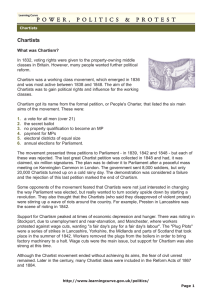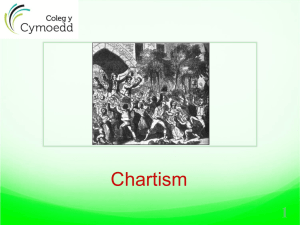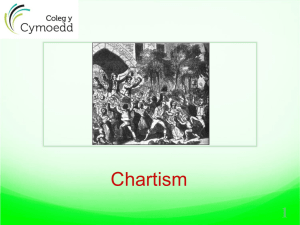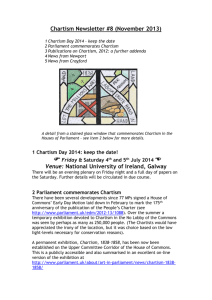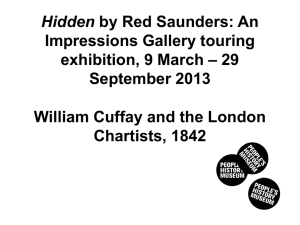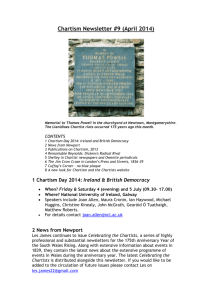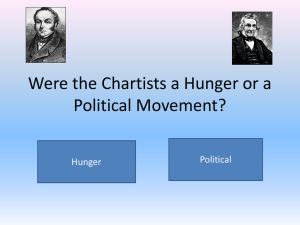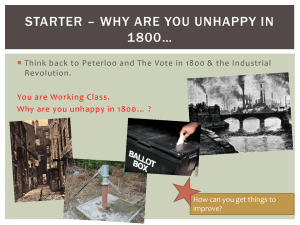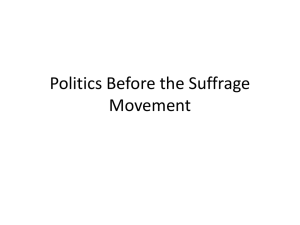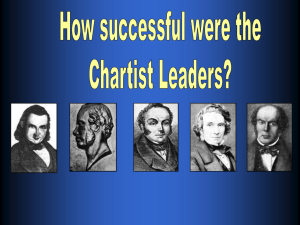Chartism 3 - Coleg y Cymoedd Moodle
advertisement
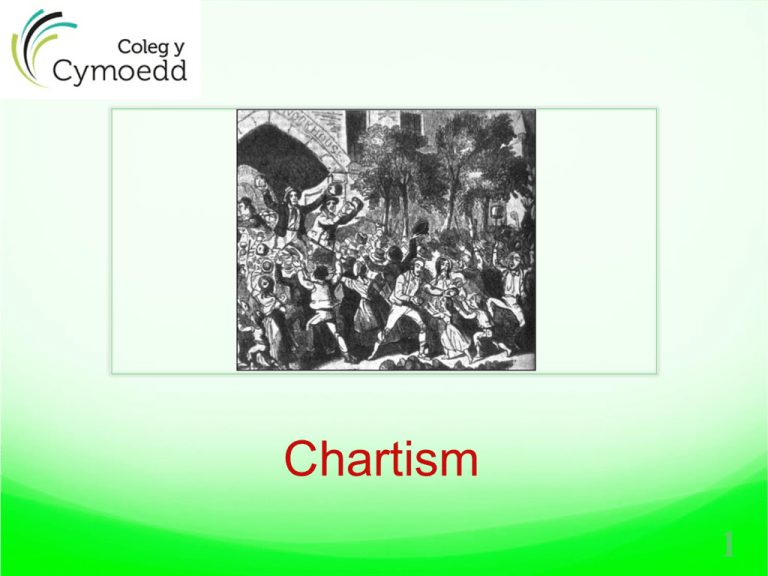
Chartism 1 Chartism’s Failure Physical versus Moral force Chartism: Moral (W. Lovett, F. Place, T. Attwood Physical (F. O’Conner, B. O’Brian, J. Frost) ‘Peacefully if we may, forcibly if we must’ 1839 rejection,: physical force results High point of physical force: Newport Physical force doomed to fail. Alarms: Middle classes Many working classes, the state Power and resources of the state: Soldiers, weapons, railways, spies, police, telegraph, money, legislation, organisation – would always win Attitudes of the state System could not be improved Elite born to power Property afforded political rights Charter, far too radical Hand power to the masses? Uneducated, incapable, swinish multitude, residuum Edmund Burke: “Along with civilisation, democracy would be cast into the mire and trodden under the hooves of the swinish multitude” Chartist factionalism “All things to all men” “Chartists not Chartism” Divisions: Physical Vs Moral force Anti Poor Law Reform Act Trade unionists Political Chartists Tee total Chartists Christian Chartists Unemployed and poor (mass base) “Knife and Fork”? Regional divisions & M/C Attitudes Manchester - Class conflict Leeds - Against new machinery Birmingham - Political Tyneside - Vote for skilled men only “Chartism’s unity was more apparent than real” Middle class attitudes: Anti Chartism, property and wealth to protect Founded Anti Corn Law League 1839. Success 1846 Trade revivals: 1839, 1842,1849, erodes mass base Other factors Events elsewhere: 1848 “year of revolutions Rerun of 1789? Sees government determination Urban / rural divide Urban, industrial phenomenon Britain, pre 1851, mostly rural Employment: agricultural and service, hard to organise Verdict on Chartism and its significance Bound to fail, ahead of its time (5 points gained by 1918) Politicisation of labour movement. Lessons learned Promoted future demands and change
